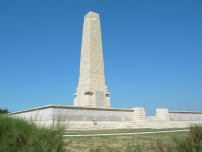| First Name: | William John | Last Name: | OSBORNE | |
|---|---|---|---|---|
| Date of Death: | 09/08/1915 | Lived/Born In: | Ealing | |
| Rank: | Second Lieutenant | Unit: | Lancashire Fusiliers9 | |
| Memorial Site: | 1. Ealing Memorial 2. Helles Memorial, Gallipoli | |||
Current Information:Gallipoli 1915 On 25 April, British, Australian and New Zealand forces landed on the Gallipoli peninsula. The plan was that these forces would soon defeat a demoralised Turkish army, knock Turkey out of the war, open up the Mediterranean to the Russian navy and threaten Austro-Hungary from the south. None of these things were achieved despite nine months of hard fighting in terrible conditions. It was a heroic failure. By July, 1915, and after much fierce fighting, stalemate had set in at Gallipoli both at Cape Helles where the British and French had landed and at Anzac Cove where the Australian and New Zealand Corps were unable to break out of their beach head. Fresh troops were needed and they were on their way in the shape of four divisions from Britain and things were put on hold until they arrived. The plan for August was for a landing at Suvla Bay to the north of Anzac Cove whilst at the same time, the ANZAC Corps, reinforced by some of the new British troops would effect a breakout from Anzac Cove and establish a line across the peninsula. Whilst this was going on the troops in the south at Helles would stage a number of diversionary attacks. But it all went horribly wrong and much of the reason for this can be explained by inadequate planning and leadership. Nobody seemed to know what they were supposed to be doing and Lieutenant-General Stopford, in charge of the Suvla landings was particularly out of his depth. The landings at Suvla failed to link up with the forces at Anzac and the breakout from there did not happen despite valiant efforts by all concerned. The loss of life on all fronts was again enormous. L.A. Carlyon’s excellent book “Gallipoli” gives a superb yet chilling account of the events. During the night of 6/7th August, 11th Division landed at Suvla. 32 and 33 Brigades came ashore on B Beach, south of Nibrunesi Point. The beach was undefended and after a line had been entrenched from the shore to the edge of the Salt Lake, 32 Brigade attacked and captured Lala Baba Hill. This was followed by the landing of 34 Brigade at A Beach inside the bay. This did not go well. Battalions landed in the wrong places and in the dark and the confusion very little progress was made. 9th Lancashire Fusiliers of 34 Brigade came ashore from lighters, one thousand yards south of their intended position and the enemy opened fire on them as they waded ashore. Turkish troops managed to infiltrate between Z and Y Companies and until the problem was dealt with by the arrival of W Company, the battalion suffered considerable casualties, particularly among the officers of Z Company. At daybreak on 7th August an enemy attack was driven off but the commanding officer of the battalion was killed by a sniper on the beach. The first objective was Hill 10, not far from the shore line and 9th Lancashire Fusiliers were part of the force that managed to capture this after some heavy fighting. On 9th August they took part in an attack, along with the 5th Dorset battalion, on a small hill called Karakol Dagh on the northern side of the bay. William Osborne died from wounds on 9th August but it is not known if he was wounded during this attack or on an earlier occasion. |
||||
| « Back to Search Results | ||||
| If you think any of the information shown here is incorrect, Click Here to submit your amends and comments | ||||




